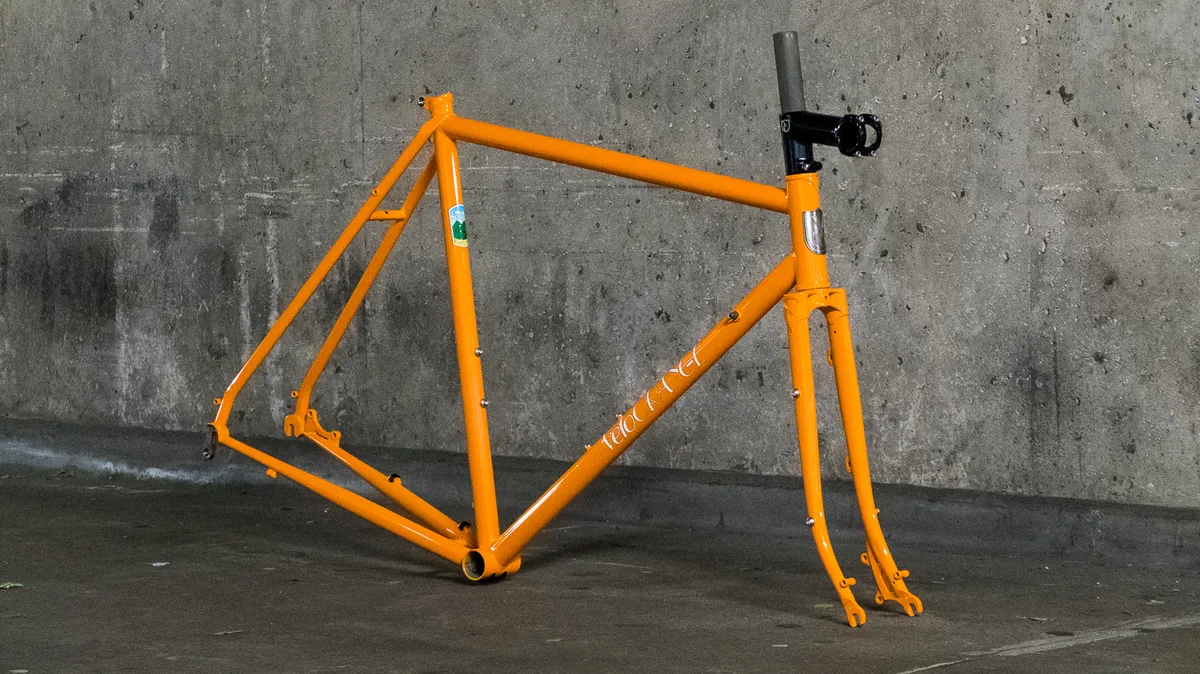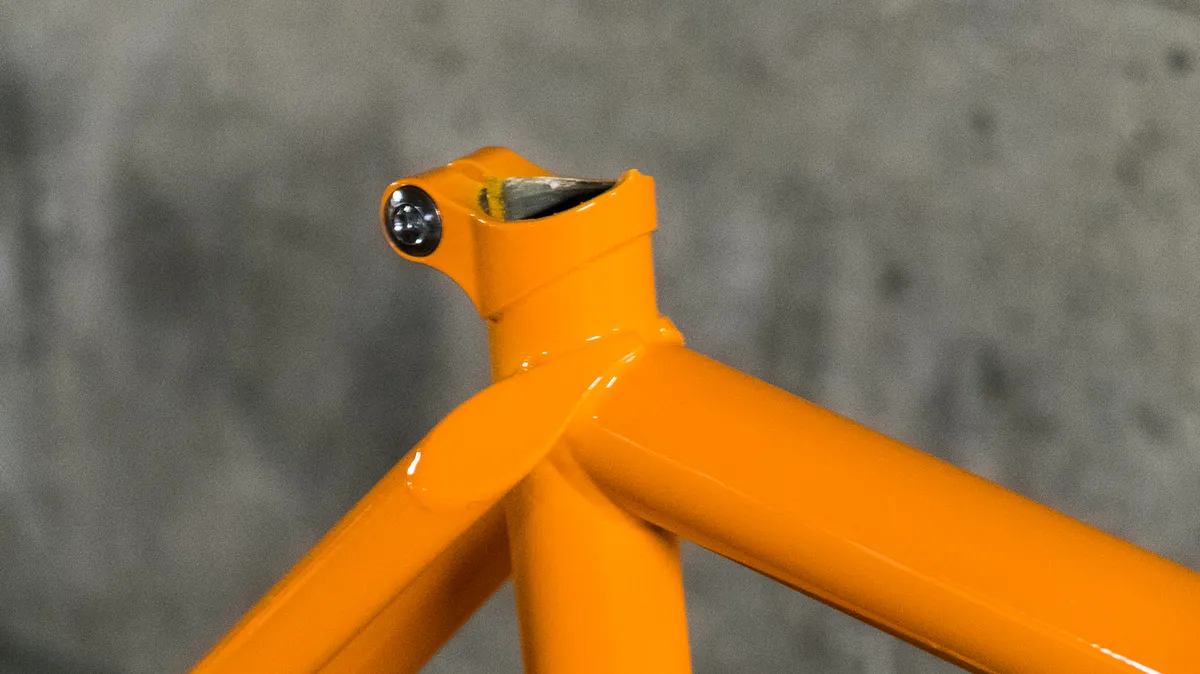The Velo Orange Pass Hunter Disc is a steel frameset that is designed for all-day riding on mixed terrain, and throughout the last 10 months — during which time it has been turned to all sorts of different roles — it’s revealed itself to be a highly versatile and incredibly fun do-it-all platform to build upon.
- The Wheel Mullet — experimenting with different sized wheels for gravel racing
- These fat road tyres from Compass might be faster than your 25s
Velo Orange Pass Hunter disc frameset key specs
- Frame material: 4130 double butted chrome-moly frameset
- Clearances: 35mm with fenders, 38mm without
- Rear spacing: 135mm
- Bottom bracket shell: English threaded 68mm
- Brakes: IS mount disc, 160mm
- Seatpost: 27.2mm
- Front derailleur clamp size: 28.6mm
- Mounts: Mudguards, front and rear racks, two bottle mounts
Check out how I got on with the Pass Hunter on our YouTube channel!
What is the Pass Hunter?
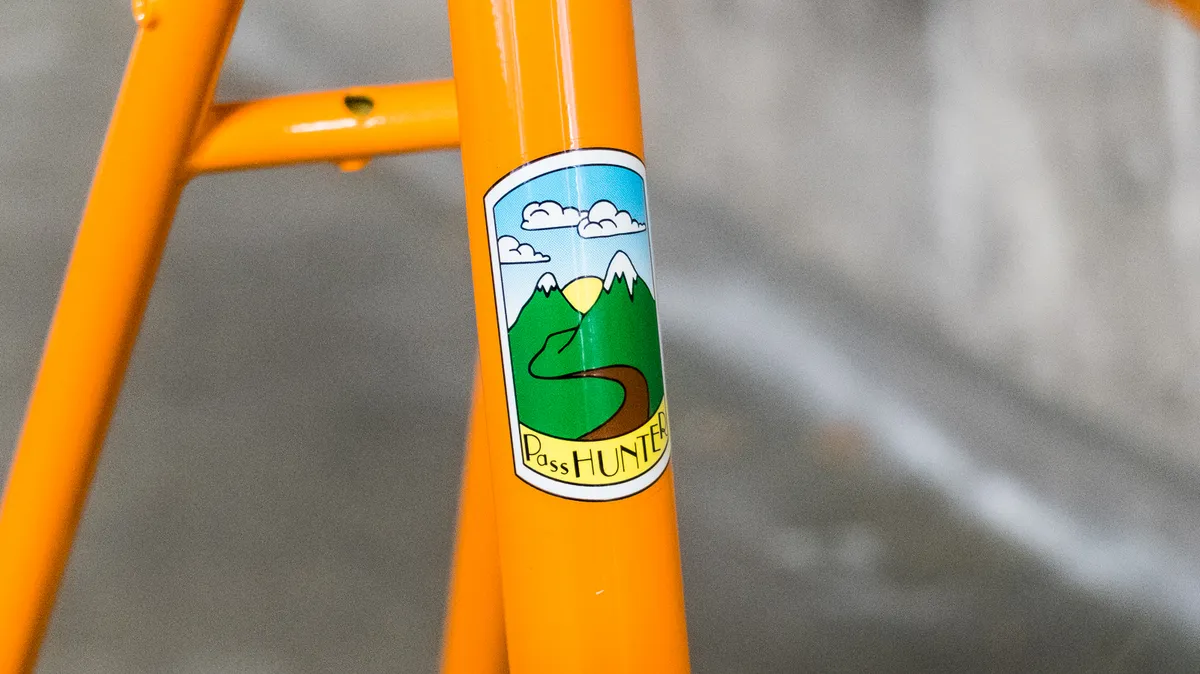
The name Pass Hunter refers to the slightly fringe sport of ‘collecting’ passes that you have ridden over. The activity is more popular in France and Japan than anywhere else and normally involves some degree of exploring little-used gravel roads and trails.
If you like the sound of this, I highly recommend you check out this list of rideable gravel passes in the Alps as a place to start, but I digress.
With this sort of pursuit in mind, the Pass Hunter is built around clearances for gravel-friendly 35mm tyres with mudguards, and 38mm tyres without.
A cantilever version of the Pass Hunter used to be available, but it is now only available as a disc frameset — a move that I think makes sense for this sort of do-it-all bike.
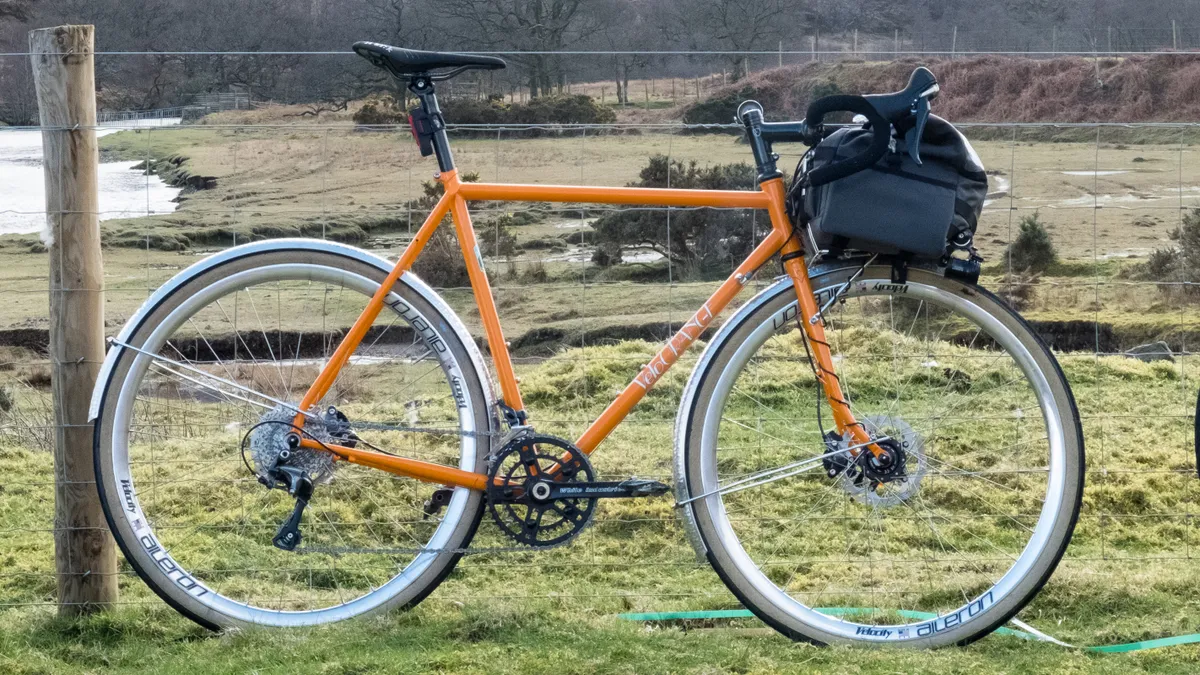
As the Pass Hunter is only available as a frameset, I had the chance to build the bike up to my own specifications.
I started out the build with an Ultegra 6800 hydraulic disc groupset, matched with a White Industries R30 crankset. While there’s absolutely nothing wrong with the 6800 crankset, I wanted something more visually in keeping with the skinny-tubed Pass Hunter — plus the excuse to try out some luxurious American exotica was too good to pass up.
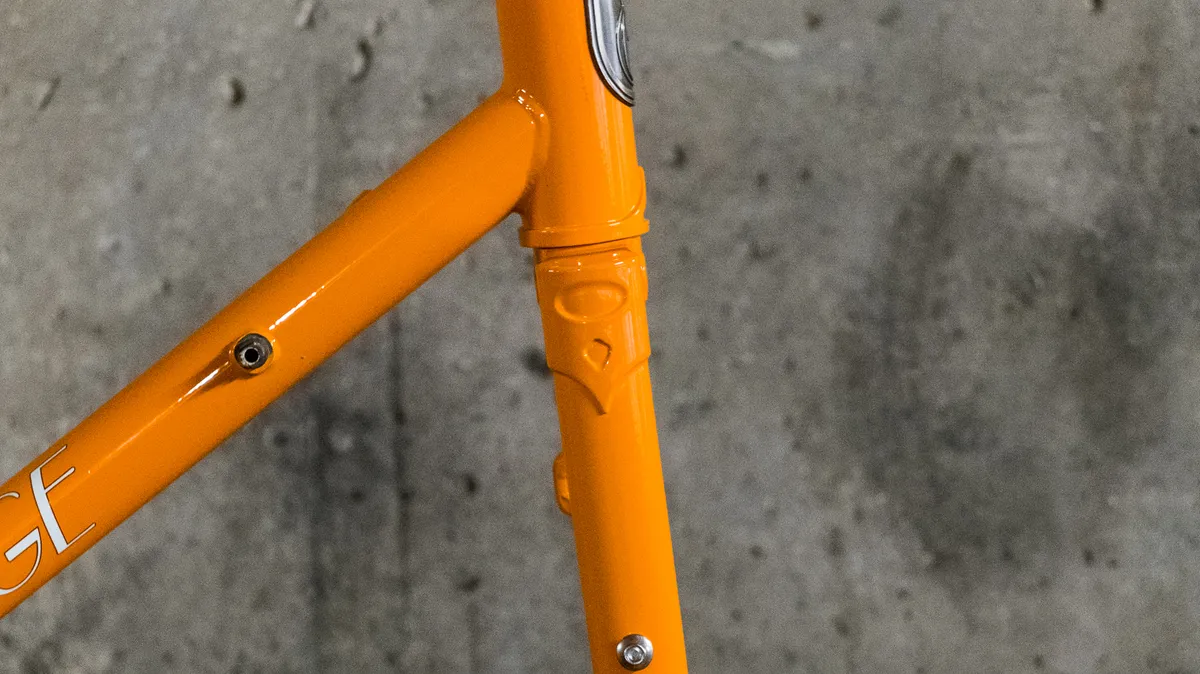
For the wheels, I built up a set of Velocity Ailreon rims onto a Shimano XT DH-T8000 dynamo hub matched with a M8000 rear hub. These wheels were shod with a pair of Compass Bon Jon tyres that were set up tubeless.
The stem, seatpost, headset, front rack and hammered mudguards came courtesy of Velo Orange, while the saddle was from Fizik. A set of Compass Randonneur bars rounded out the build.
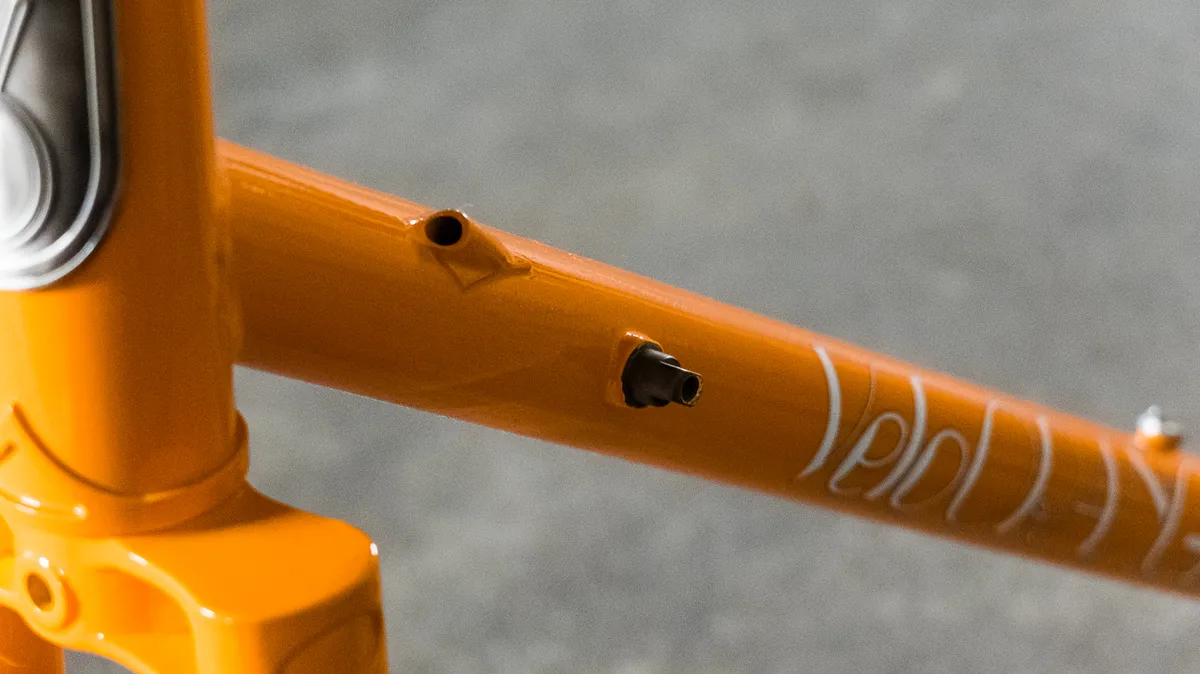
A particular highlight of the build was the full length routing for the rear brake through the down tube. I cannot stress how much this pleases me, and Velo Orange deserves one-thousand-million-zillion mechanic-friendly points for this oh-so-simple but so regularly overlooked detail.
The clearances around the hooded dropouts are quite tight and I did have some issues with using certain quick releases, particularly internal cam Shimano QRs. The bottom bracket shell and head tube also benefited from a face and chase, but otherwise building the bike was absolutely painless.
Unfussy and highly versatile
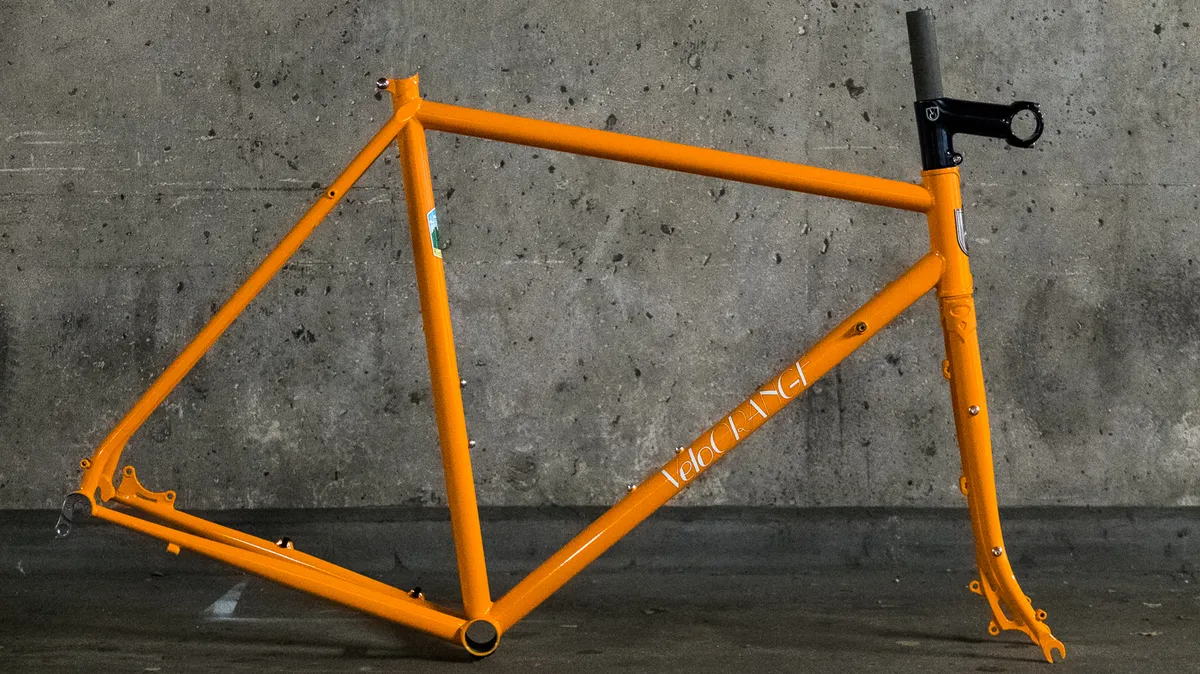
For me, the real attraction of the Pass Hunter is its incredible versatility — providing you have the parts, know-how and time to spare, you could turn the Pass Hunter disc to pretty much any role.
The use of totally unfussy and long-standing standards helps here — built around a 27.2mm seatpost, a 68mm threaded bottom bracket, a 1 ⅛-inch straight head tube, IS mounts, quick release dropouts and even down tube shifter mounts, the likelihood is that your spare parts hoard will be ripe for pillaging to build your own Pass hunter.
With seemingly every braze on under the sun bristling on the Pass Hunter, you could also easily turn the bike from full on touring duties to spirited long distance riding with the swap of only a handful of parts.
Taking full advantage of this versatility, I’ve reimagined the Pass Hunter in a number of different builds throughout my time with the bike.
The Wheel Mullet

Following the original long-distance riding focussed build, I turned the Pass Hunter into a totally different gravel-racing form.
This particular setup was quickly dubbed the ‘Wheel Mullet’ and I ran it at this year’s edition of the Dirty Reiver.
You can read more about that setup here, but as a brief recap, I’d hoped to run a pair of 650bx2.-inch WTB Nano tyres mounted to a set of Hunt Adventure Sport wheels on the Pass Hunter for the event. The Pass Hunter is not built specifically to run 650b wheels, but I know Velo Orange itself had success with its experiments, so I decided to give it a whirl.
However, mere days before the race, I realised I couldn’t fit the exceptionally chunky tyre into the rear of the bike. Scrabbling about for an alternative solution, I realised that I had a matching 700x40mm tyre and a Hunt ‘cross wheel that I could use on the bike, and decided to mix and match wheel sizes.

Safe to say, the experiment was a right hoot and worked flawlessly during the race and the few months that I ran the bike in this guise.
In particular, the increased volume of the front tyre resulted in a comically cushioned ride that allowed me to cruise over the gnarliest terrain.
The phrase ‘wheel mullet’ has now also entered the day-to-day parlance of BikeRadar, so I really couldn’t ask for anything more.
Randolite
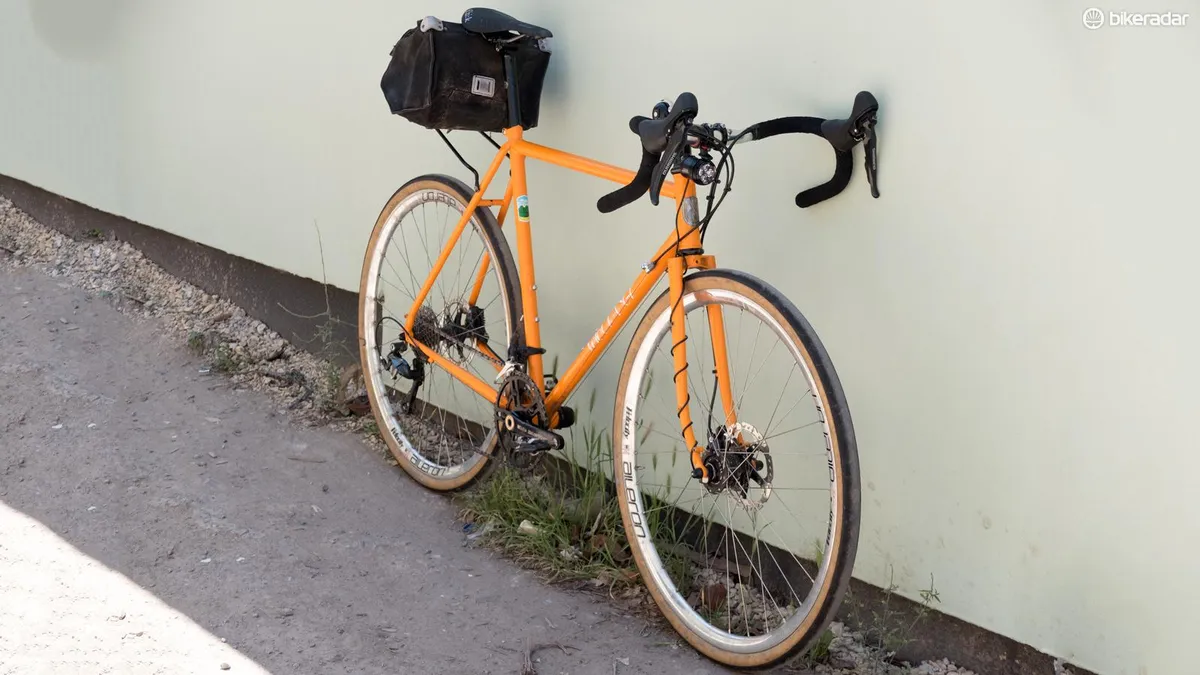
Following this I stripped the bike right back to a pared down long distance build, losing the front rack and mudguards in favour of a lighter build that I dubbed #randolite.
As should be clear by now, the possibilities with this bike are pretty much endless and if you’re a chronic fettler like me, I have no doubt the Pass Hunter will tickle your pickle.
Low trail, high speed
What sets the Pass Hunter apart from many other steel do-it-all framesets is its use of a mid-trail geometry.
Trail (sometimes referred to as castor) is the definition of how far the contact patch of the tyre lies behind the steering axis of the fork. A lower trail figure generally results in a lighter handling bike, while a bike with a high trail figure will typically be more stable.
For the sake of reference, a truly low trail bike would have a trail figure in the 30mm-ish range and the Pass Hunter has a trail figure of 56mm with 32mm tyres. A Genesis Tour de Fer, a touring bike that is designed for carrying heavy loads, has a trail figure of 61mm.
If you’d like to learn more about trail and offset — though the discussion is specific to mountain bike handling — check out this excellent article from our resident bike science nerd Seb Stott.
When riding with a front load (most typically a big rando’ style bag on the Pass Hunter) the effect that the mid-trail geometry has on handling is very noticeable — the steering feels very light yet predictable and corners that would otherwise be tricky to navigate with a loaded bike are easily tackled at speed.
Riding without a load, the handling of the bike is incredibly light, accurate and very, very fun.
Riding on winding roads or when descending is when the effect is most pronounced — the Pass Hunter takes far less body language to manoeuvrer through corners than many bikes, and when matched with a set of super grippy fat tyres, you can really begin to test the limits of quite how far sideways you can go.
The ride quality of the Pass Hunter is best described as smooth and competent. Big fat tyres obviously isolate you from most ordinary bumpy-lumps and the frameset has a degree of skinny-steel compliance that helps to smooth out bigger hits.
I’d struggle to describe the Pass Hunter as particularly spritely compared to similar steel bikes I’ve ridden in the past — the ride isn’t exactly dead feeling, but it lacks that zing that lighter weight steel possesses.
This is somewhat offset by the light and fast handling, but ultimately you’re probably not interested in the Pass Hunter if you’re looking for out-and-out speed.
Velo Orange Pass Hunter conclusions
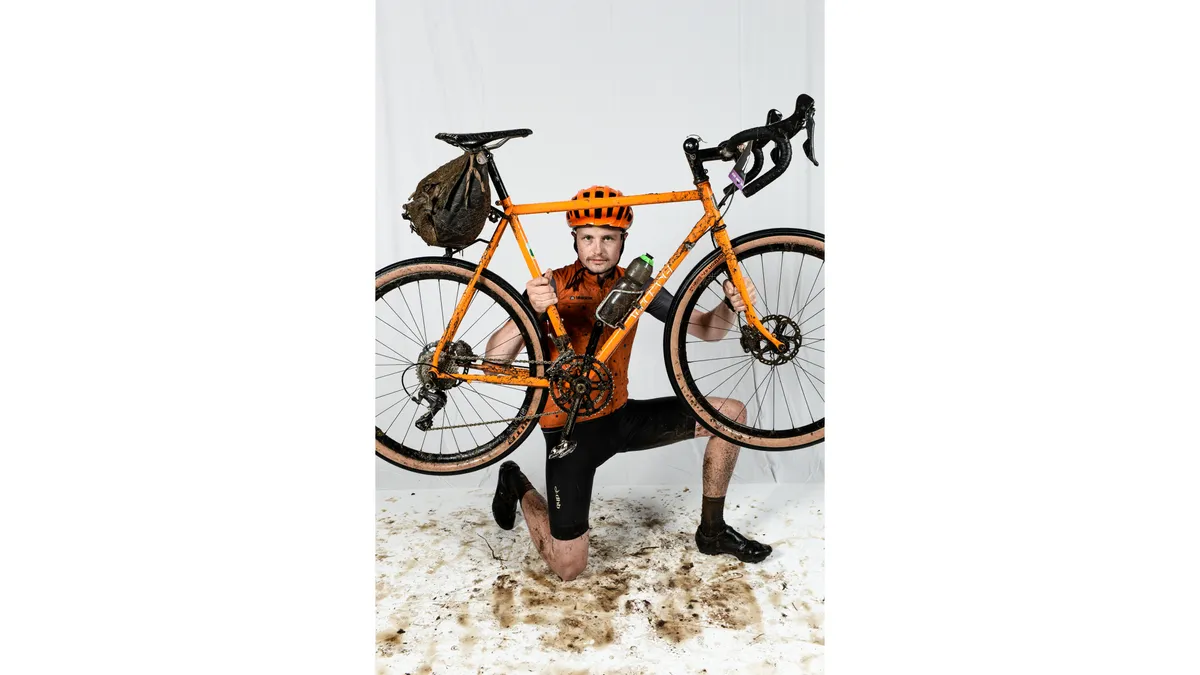
Overall, I’ve finished my test period very satisfied with the time I spent on the Pass Hunter.
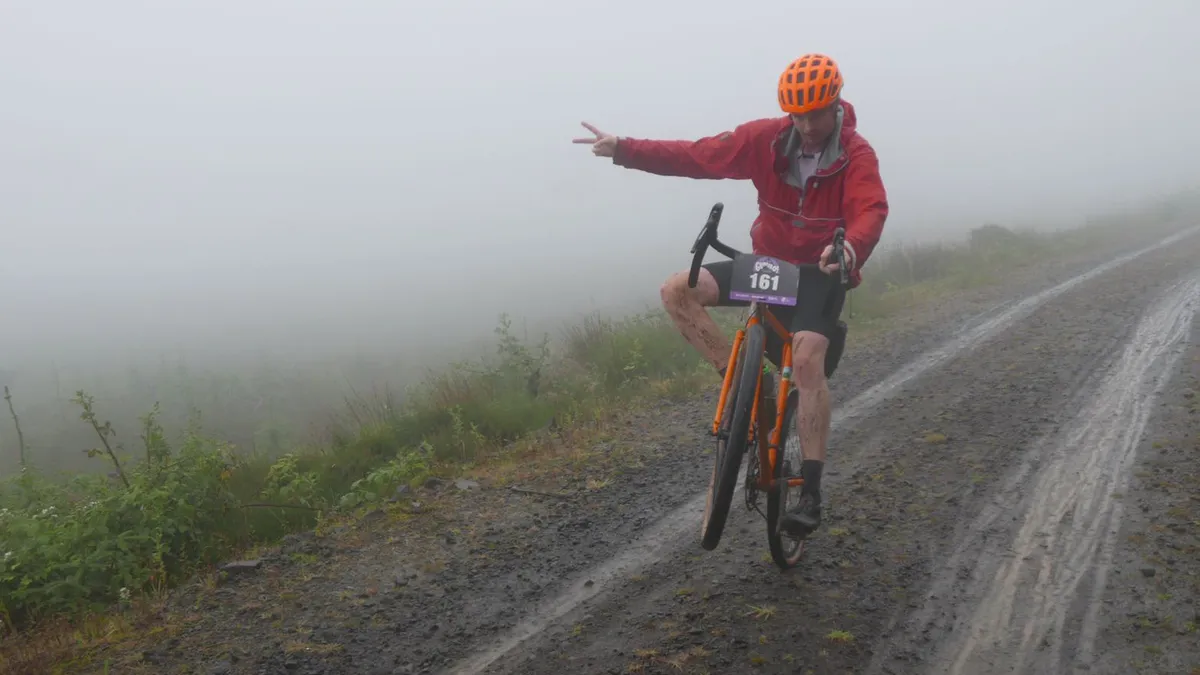
The frameset has proven itself time and again to be a highly adaptable, resilient and incredibly fun platform to build upon that will delight fettlers and day-to-day riders alike.
I’ve also found myself converted to the idea of lower trail. Although brands such as Velo Orange, Crust and Rawland are experimenting with low trail geometry, I’d love to see the wider industry get a bit more freaky with their front end.
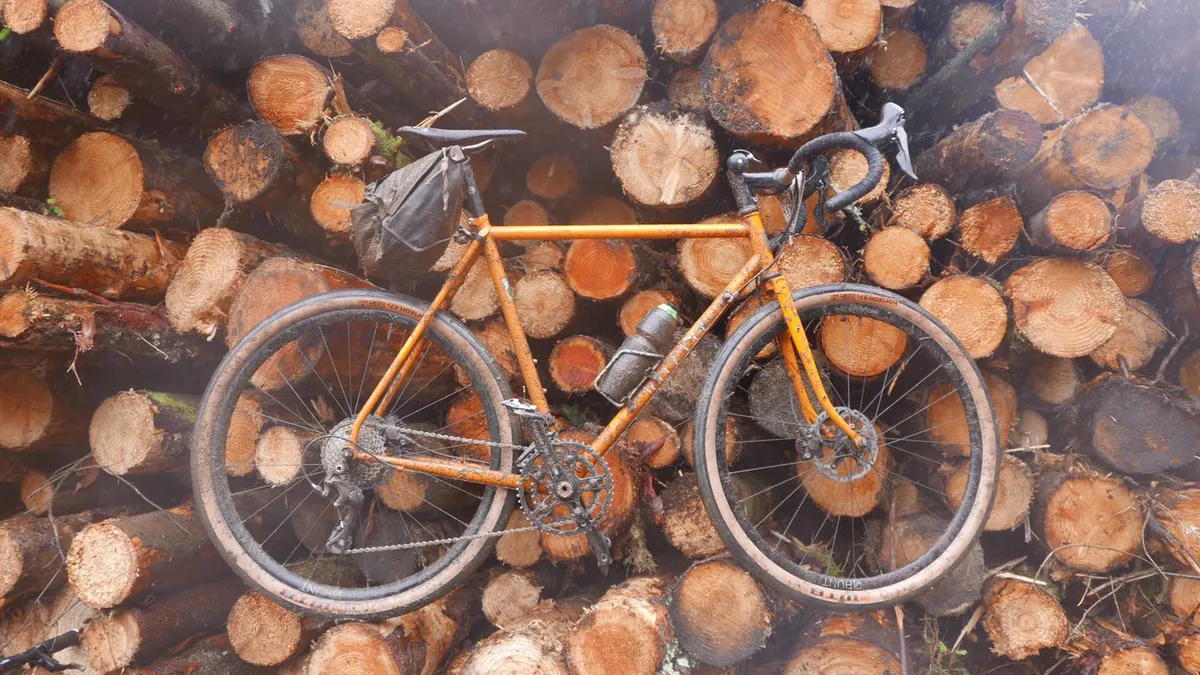
If you’re looking for a super fun steel platform that will be able to handle nearly any terrain you may face, the Pass Hunter might just be for you.
